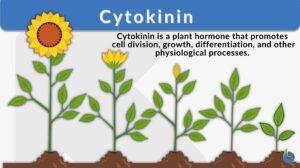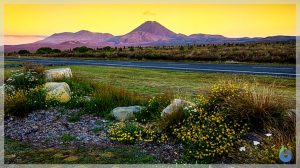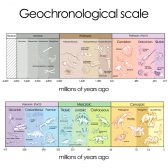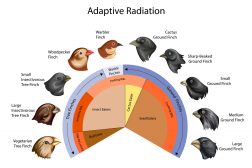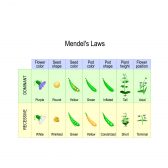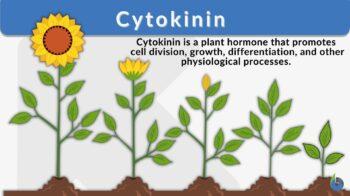
Cytokinin
n., plural: cytokinins
[ˌsaɪtəʊˈkaɪnɪn]
Definition: Plant hormone promoting cell division, cell growth and differentiation
Table of Contents
Plants require growth hormones for their regulated growth. Plant growth hormones or regulators (PGRs) are small organic compounds that are synthesized by plant cells and tissues. These PGRs are active in very small concentrations. They can serve both purposes of promoting or inhibiting the growth of plants. There are 5 major plant hormones namely gibberellic acid, abscisic acid, ethylene, auxins, and cytokinins. The scope of this article is limited to cytokinins which serve some very amazing and indispensable roles in plants. Read on to learn more about what is cytokinin hormone in plants, its types, functions, biosynthesis, examples, and more.
Cytokinin Definition
Cytokinin, along with auxin, is counted as a vital growth factor. A plant requires both of these PGRs for the very survival of the embryo. Hence, the essence that cytokinin gathers is irreplaceable. We can define cytokinin as the plant growth factor that promotes cell division. Cytokinins are known to promote the process of cytokinesis in conjunction with auxins. There are several properties credited to this hormone, such as wound healing, abscission in plants, cell enlargement, feminizing effect, promotion of shoot growth over root growth, and many more.
Cytokinin Discovery
Plant mutants occur for all the hormones but not for auxin and cytokinin. These two hormones are very essential from the beginning of plant life. Even embryo growth isn’t possible without them. There were consecutive studies in the 1900s whose results together helped in deciphering the nature of this plant hormone. Let’s take a quick look at the timeline of the discovery of cytokinin.
1. G. Haberlandt (1913)
- It was Haberlandt who first discovered and demonstrated that there’s a “chemical control” in plant cell division.
- How was it demonstrated? He showed that the plant phloem sap has some ‘chemical constituent’ that is capable to induce cell division in non-dividing parenchymatous potato tubers.
- Additionally, in 1921, he also demonstrated that if we cut the surface of plant tissue and wash it, then the healing of the tissue is prevented. If you cut the same tissue and leave it as such, the exudate from the wound region helps the plant tissue to heal.
- It was later that cytokinins were characterized and credited with this “wound healing” role in plant tissues.
2. Philip White (1930)
- He demonstrated that the roots of tomato plants could be grown in a simple medium but stem cuttings couldn’t be grown even when supplemented with auxin supplementation.
- This indicated that there must be some root-derived growth factor or factors that must be responsible for the regulation of stem growth.
- Only auxin isn’t sufficient for the stem cuttings to grow. This pointed at the existence of another chemical entity playing a role in plant growth.
3. Van Overbeck (1942)
- He and his team demonstrated that coconut milk contains a material that promotes the growth of embryos in tissue culture.
- Later on, it was discovered that coconut milk has cytokinin.
- Philip White medium supplemented with auxin and 10-20% coconut milk was found to be supporting the cell division efficiently.
4. Jablonski and Skoog (1954)
- They observed the simulation of cell division in cultures of Tobacco callus.
- They demonstrated that pieces of vascular tissue when cultured on top of non-dividing pith cells (parenchymatous cells) resulted in cell division.
5. Skoog (1940s and 1950s)
- Skoog tried many different substances to find the exact substance that supports cell division.
- He found out that “autoclaved herring sperm DNA” from fish has very strong and powerful cell dividing activity.
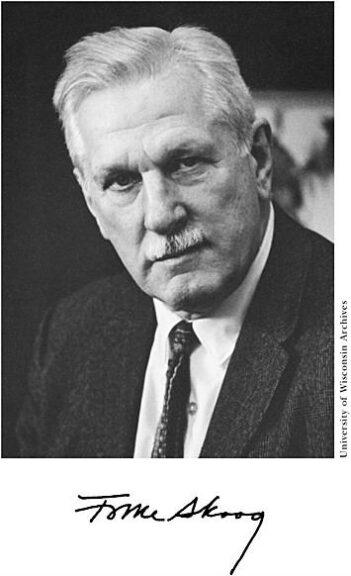
6. Miller (1955)
- He was the first one to isolate the active component from autoclaved herring sperm DNA.
- He named the active component as “KINETIN”, based on the ‘kinesis’ activity.
- Kinetin is the 1st cytokinin to be isolated from a biological source.
- Kinetin is actually 6-furfuryl aminopurine.
- After this isolation, plant biologists started actively looking for a similar ‘kinesis-promoting’ molecule in plants.
7. Letham (1973)
- He isolated a molecule from extracts of an immature endosperm of maize which had similar activity as cytokinin.
- He named this molecule “ZEATIN”.
- So, zeatin is the 1st cytokinin isolated from a plant source.
- Zeatin is actually benzyl aminopurine.
- There are 2 different forms of this zeatin, namely trans-zeatin and cis-zeatin. Trans-zeatin is the most bioactive form present in all plants while cis-zeatin is present only in a few plants like wheat, rice, etc).

Cytokinin is a class of plant growth hormones that are active in promoting cell division, growth, differentiation, and other physiological processes. Examples are kinetin, zeatin, and benzyl adenine.
Cytokinin Structure
The very basic structural requirement for a molecule to be a cytokinin is “6-amino purine moiety”. All-natural cytokinins have a basic structure of this 6-amino purine with different side chains. The side chains are at the N6-position. Different side chains at the N6-position have different structures and conformations. The distinctive nature of these side chains makes a marked distinction in the different cytokinins, thus influencing their individual biological activities.
Types of Cytokinin
There are 2 ways that we can study the different types of cytokinins.
First Way
Depending on the basic structure and framework of the N6-side chain, cytokinins are placed into two categories. They are isoprenoid or aromatic cytokinins. Both of these cytokinins have almost similar biological activities in the “qualitative terms”. But their biological activities are quite distinct in the “quantitative terms”.
- Isoprenoid cytokinins: Sidechain is either an isopentenyl (iP)-type (in iP-type cytokinins) or hydroxylated isopentenyl side chain (in zeatin-type cytokinins). Most abundant class of cytokinins in the plant world: Isoprenoid cytokinins.
- Aromatic cytokinins: Sidechain is an aromatic benzyl group. Rare and much less known cytokinins in the plant world: Aromatic cytokinins. Type of cytokinins preferably used in tissue culture work: Aromatic cytokinins. (Reason: Greater stability of aromatic cytokinins) An example of cytokinin: Benzyladenine.
Second Way
- Adenine-type cytokinins: Mostly produced in roots of plants. Natural cytokinin examples: kinetin, zeatin, and 6-benzylaminopurine
- Phenylurea-type cytokinins: These are synthetic cytokinins. They are highly active and don’t occur naturally. Synthetic cytokinins examples: diphenylurea and thidiazuron (TDZ).
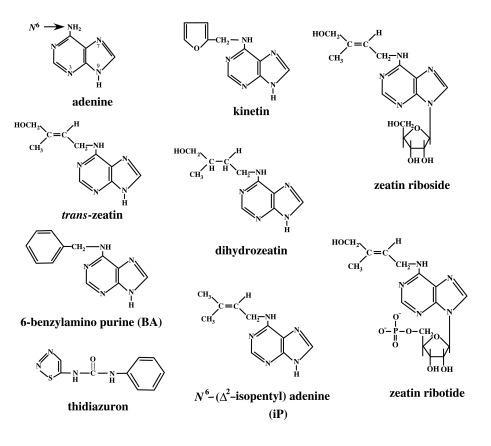
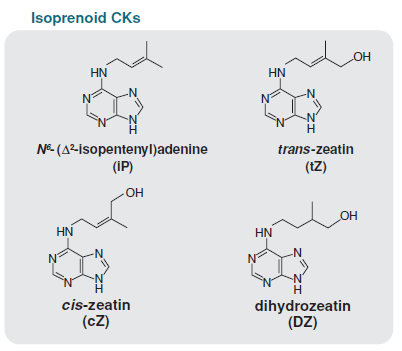
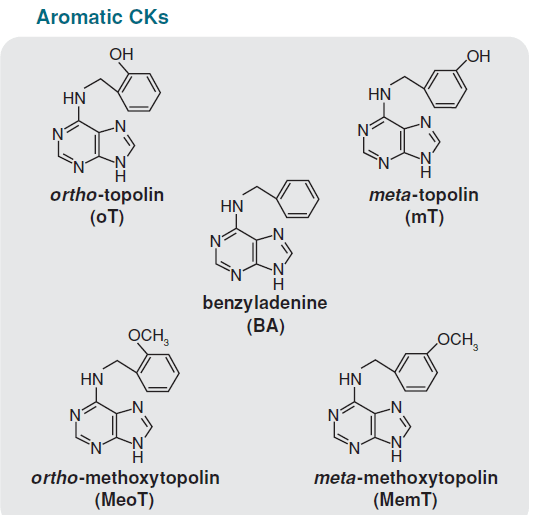
Cytokinins Functions
There are several functions assigned to this plant hormone. So, when asked what is the role of cytokinin hormone in plants, you can list any of these.
Role in cell division
- Cytokinins regulate both G1 to S phase transition and G2 to M phase transition in the cell cycle.
- Cytokinins are responsible for the positive regulation of SAM (shoot apical meristem) and the negative regulation of RAM (root apical meristem).
Morphogenesis
- Cytokinins are capable of mediating callus differentiation into shoots and roots.
- This differentiation isn’t the sole capability of auxins. Only auxins acting in presence of cytokinins can mediate this process.
- Auxin/Cytokinin Ratio=HIGH (leads to root initiation)
- Auxin/Cytokinin Ratio=LOW (leads to shoot initiation)
- Auxin/Cytokinin Ratio=1 (leads to proliferation of undifferentiated cells, as in crown gall formation)
Inhibition of Apical Dominance
- Auxins via strigolactones lead to BRC1 protein production. BRC1 is responsible for lateral growth suppression.
- It is at this intracellular level that cytokinin acts and inhibits BRC1.
- Since no lateral growth is suppressed now, it can express itself effectively. This, in turn, paves way for inhibition of apical dominance.
Chloroplast maturation
- Cytokinins are responsible for the maturation of etioplasts (protochlorophyll) to chloroplasts (chlorophyll).
- Cytokinins trigger the enzymes and structural proteins responsible for the formation of thylakoid structures and systems and photosynthesis machinery required for chloroplast maturation.
Delaying senescence
- Cytokinins are responsible for delaying senescence in plants.
- The mechanisms for this process haven’t been elucidated yet.
- This is the reason cytokinins are also called ‘anti-aging hormones”.
Promotes feminizing effect
Promotes root initiation in plant cuttings (like in callus)
Promotes flowering in plants
Promotes phloem transport
Promotes shelf life of vegetables and cut flowers
Inhibits dormancy in plants
Note: Cytokinin does not help in the promotion of leaf senescence. Rather it suppresses leaf senescence.
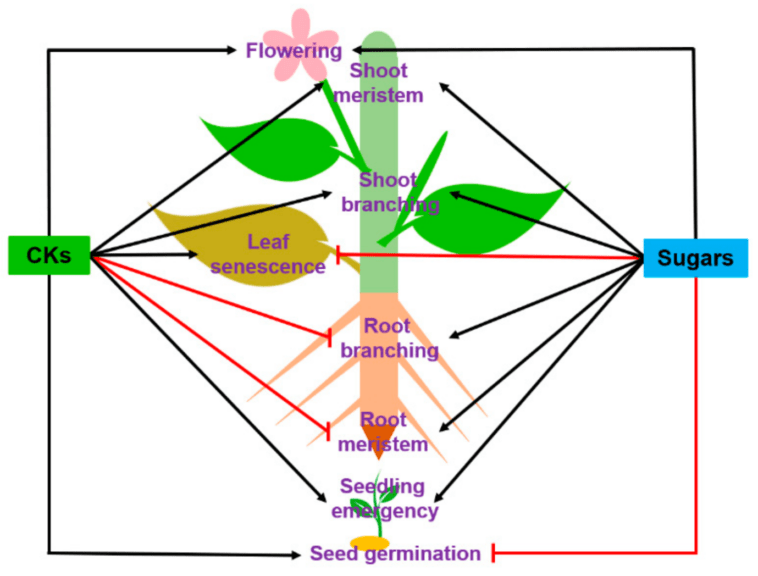
Mode of Action
- The mechanism of action for cytokinin signaling in the plant world is mediated by a multistep phosphorelay system.
- There are 2 main components: a sensory His-kinase and a response regulator.
- When the ligand (cytokinin) binds to the sensor histidine (his-) kinase receptor in the ER (endoplasmic reticulum) membrane, then the signaling starts.
- As the receptor gets autophosphorylated, the phosphate is then transferred to a phosphotransfer protein.
- The activity of the response regulator is modulated by the “phosphorylation state” of its receiver domain.
- This phosphate group is then transferred from the sensor his-kinase to the receiver domain of response regulators (RR).
- An aspartate gets phosphorylated in the receiver domain or RR and this signal gets transferred to the affector domain of RR.
- Now that the RR is activated, it can cause the activation or inhibition of transcription.
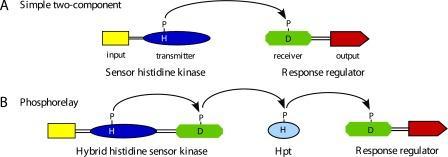
Biosynthesis
- The cytokinin biosynthesis is maximum in the meristematic regions (actively dividing and growing regions).
- Pathway for biosynthesis: ISOPRENOID pathway.
- The enzyme involved in the very 1st reaction in cytokinin synthesis: Adenosine phosphate-isopentenyltransferase (IPT)
- Precursor of cytokinin= Purine (adenine or guanine)
- Various substrates for the biosynthesis of isoprene cytokinins= ATP, ADP, AMP, DMAPP, HMBPP
- Rate-limiting step in the biosynthesis of cytokinins = Biosynthesis of isoprene cytokinins
- Only plant hormone that plays role in the regulation of biosynthesis of cytokinin= Auxin
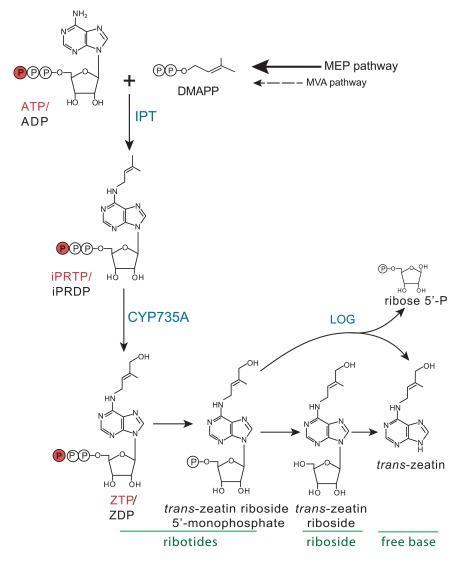
Cytokinin Uses
Cytokinins are of great use. We have already looked at its varied spectrum of functions. Hence, using those leads, some of the chalked-out uses are:
- Practically used by plant growers and farmers for increasing the production of their crops.
- Helpful with cotton seedlings as it increases their survival rates and yields by 5-10 % even in drought conditions.
- Used in genetic engineering (iPT gene is responsible for cytokinin production and present in tDNA)
- Lettuce seeds are photoblastic (meaning they need exposure to light for germination). But it has been recorded that if these seeds are instead given a cytokinin treatment, they germinate without exposure to light. This means cytokinins replaced the role of light in the photoblastic seeds’ germination.
- Commercial usage of cytokinins: Virus-infected and bacteria-infected areas are the areas of cytokinins. And these areas are greener and hence, contain more chlorophyll. These are called green islands.
- Used in tissue culture for promoting cell division and plant growth.
- Used for germination of seeds.
Try to answer the quiz below to check what you have learned so far about cytokinin.
References
- Taiz, Lincoln; Zeiger, Eduardo (2010). “Ch. 21: Cytokinins: Regulators of Cell Division”. Plant Physiology (5th ed.). Sinauer. ISBN 978-0-87893-866-7.
- Kieber, J. J., & Schaller, G. E. (2014). Cytokinins. The Arabidopsis Book/American Society of Plant Biologists, 12.
- Skoog, F. O. L. K. E., & Armstrong, D. J. (1970). Cytokinins. Annual review of plant physiology, 21(1), 359-384.
- Mok, M. C. (2019). Cytokinins and plant development—an overview. Cytokinins, 155-166.
- Sakakibara, H. (2006). Cytokinins: activity, biosynthesis, and translocation. Annu. Rev. Plant Biol., 57, 431-449.
- Haberer, G., & Kieber, J. J. (2002). Cytokinins. New insights into a classic phytohormone. Plant Physiology, 128(2), 354-362.
- Skoog, F., Strong, F. M., & Miller, C. O. (1965). Cytokinins. Science, 148(3669), 532-533.
- Kakimoto, T. (2003). Perception and signal transduction of cytokinins. Annual review of plant biology, 54(1), 605-627.
- Letham, D. S., & Palni, L. M. S. (1983). The biosynthesis and metabolism of cytokinins. Annual Review of Plant Physiology, 34(1), 163-197.
- Kieber, J. J. (2002). Cytokinins. The Arabidopsis Book/American Society of Plant Biologists, 1.
- Howell, S. H., Lall, S., & Che, P. (2003). Cytokinins and shoot development. Trends in plant science, 8(9), 453-459.
- Akiyoshi DE, Klee H, Amasino RM, Nester EW, Gordon MP. 1984. T-DNA of Agrobacterium tumefaciens encodes an enzyme of cytokinin biosynthesis. Proc. Natl. Acad. Sci. USA 81:5994–98
- Wang, M., Le Gourrierec, J., Jiao, F., Demotes-Mainard, S., Perez-Garcia, M.-D., Ogé, L., Hamama, L., et al. (2021). Convergence and Divergence of Sugar and Cytokinin Signalling in Plant Development. International Journal of Molecular Sciences, 22(3), 1282. MDPI AG. Retrieved from http://dx.doi.org/10.3390/ijms22031282
©BiologyOnline.com. Content provided and moderated by Biology Online Editors.

